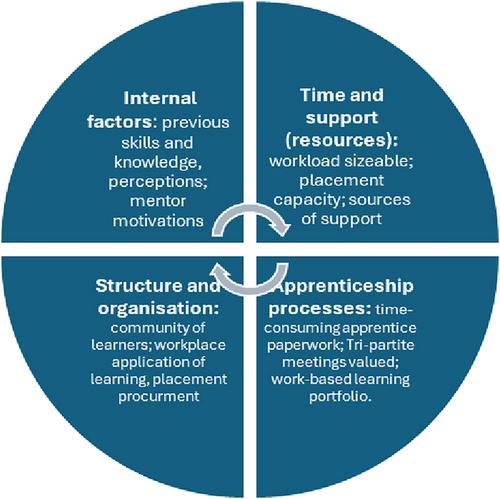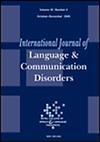Strengths and Challenges of the Speech and Language Therapy (SLT) Degree Apprenticeship Route: Initial Stakeholder Perspectives
Abstract
Background
This article shares details of a pilot research project that explored stakeholder perceptions and experiences of the academic and work-based elements involved in one university's innovative speech and language therapy (SLT) degree apprenticeship.
Aims
To share findings about SLT apprentice learner and mentor expectations and experiences since this knowledge, including of barriers and facilitators, will enable the university concerned, and others already providing or developing their SLT degree apprenticeship, to enhance their offer and so apprentice learning experience and outcomes.
Methods and Procedures
Following ethical approval, a mixed-methods research design was applied. In phase one, 18 apprentice and mentor participants involved in the programme completed online questionnaires. Themes identified from inductive thematic analysis of the questionnaire data were probed further in nine online semi-structured interviews, with transcripts also being analysed using inductive thematic analysis.
Outcomes and Results
Findings offer new knowledge about the apprenticeship route into the profession and provide valuable insight for HEIs and employers considering or developing an SLT or wider allied health profession (AHP) apprenticeship offer. This includes detail about the strengths and challenges related to four key themes: internal factors; time and support; structure and organisation; and apprenticeship processes.
Conclusions and Implications
The apprenticeship provides an economically sustainable and practical progression opportunity for learners, including SLTAs, and may provide SLT training that is better embedded in clinical practice than traditional routes. Collaboration between the key stakeholders (apprentice learner, workplace mentor, and HEI) is central to this, though challenges in terms of time and resources exist. Developing and sustaining SLT apprenticeships therefore has implications for future workforce development and the profession.
WHAT THIS PAPER ADDS
- Degree apprenticeships, as a route into the speech and language therapy profession, are in their infancy; thus, research and information about them are emergent.
- The university where the study took place had been involved in the RCSLT apprenticeship trailblazer group since its inception in 2017 and offered the first full-time SLT Degree Apprenticeship (DA). Findings about what is different about SLT DA education and learners as compared to traditional routes are presented. The study provides new information about who chose to study SLT via the DA and why, and what components should be considered, including how, when and where DAs might be delivered.
- Whilst the DA SLT appears to have distinct advantages over more traditional routes in terms of continual integration of theoretical and work-based learning and experience, challenges around workload exist. This study was conducted at an early stage of the DA delivery, so knowledge about threats and whether the route will fulfil workforce development hopes remains to be seen.


 求助内容:
求助内容: 应助结果提醒方式:
应助结果提醒方式:


